
Temple Newsam, is a Tudor-Jacobean house in Leeds, West Yorkshire, England, with grounds landscaped by Capability Brown.

Austhorpe is a civil parish and residential suburb of east Leeds, West Yorkshire, England. It is 5 miles (8.0 km) to the east of city centre and close to the A6120 dual carriageway and the M1 motorway.

Adel is a suburb of Leeds, West Yorkshire, England. To its immediate south is Weetwood, to the west are Cookridge and Holt Park, to the east are Alwoodley and Moortown, and to the north are Bramhope, Arthington and Eccup.

The Leeds Corn Exchange is a Victorian building and former corn exchange in Leeds, West Yorkshire, England, which was completed in 1863. It is a grade I listed building.

Cuthbert Brodrick FRIBA was a British architect, whose most famous building is Leeds Town Hall.

The Grand Theatre, also known as Leeds Grand Theatre and Leeds Grand Theatre and Opera House, is a theatre and opera house in Briggate, Leeds, West Yorkshire, England. It seats approximately 1,500 people.

Marshall's Mill is a former flax spinning mill on Marshall Street in Holbeck, Leeds, West Yorkshire, England.
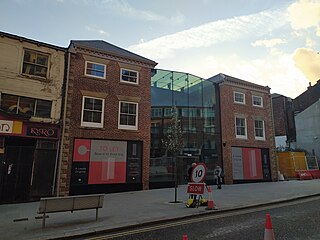
The 1st White Cloth Hall is a Grade II* listed building on Kirkgate, in the city centre of Leeds in West Yorkshire, England.

Leeds Cathedral, formally the Cathedral Church of St Anne, commonly known as Saint Anne's Cathedral, is the cathedral of the Roman Catholic Diocese of Leeds, and is the seat of the Roman Catholic Bishop of Leeds. It is in the city of Leeds, West Yorkshire, United Kingdom. The city of Leeds does not have a Church of England cathedral, because though it is in the Anglican Diocese of Leeds, that diocese's cathedrals are in Ripon, Wakefield and Bradford.
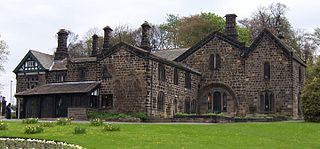
Abbey House Museum in Kirkstall, Leeds, West Yorkshire, England is housed in the gatehouse of the ruined 12th-century Kirkstall Abbey, and is a Grade II* listed building. The house is 3 miles (4.8 km) north west of Leeds city centre on the A65 road. It is part of the Leeds Museums & Galleries group.

Leeds Town Hall is a 19th-century municipal building on The Headrow, Leeds, West Yorkshire, England. Planned to include law courts, a council chamber, offices, a public hall, and a suite of ceremonial rooms, it was built between 1853 and 1858 to a design by the architect Cuthbert Brodrick. With the building of the Civic Hall in 1933, some of these functions were relocated, and after the construction of the Leeds Crown Court in 1993, the Town Hall now serves mainly as a concert, conference and wedding venue, its offices still used by some council departments. It was designated a Grade I listed building in 1951.
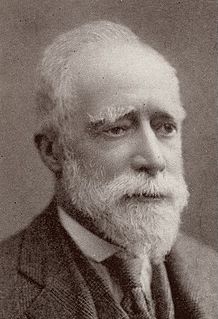
George Corson (1829–1910) was a Scottish architect active in Leeds, West Yorkshire, England.

The Leeds Club is a Grade II* listed Victorian building in Leeds, West Yorkshire, England. It is situated on Albion Place in the city centre.

St John the Evangelist's Church is a redundant Anglican church in the centre of the city of Leeds, West Yorkshire, England. It is recorded in the National Heritage List for England as a designated Grade I listed building, and is under the care of the Churches Conservation Trust. The architectural historian Nikolaus Pevsner refers to it as "the only church at Leeds of more than local interest".
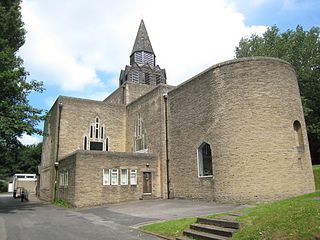
St Wilfrid's Church, Halton was designed by Albert Randall Wells and built between 1937 and 1939. It is situated in the 1930s suburb of Halton in Leeds, England.

The Golden Beam is a pub and Grade II listed building located in the Headingley area of Leeds, West Yorkshire, England. It was built in c. 1912 for the Church of Christ, Scientist, and was known as the Elinor Lupton Centre from 1986 to 2010 when it was a school arts centre. It was designed by Piet de Jong and William Peel Schofield from the architectural firm Schofield and Berry. Constructed in white Portland stone in a mixed style of Egyptian Revival and Art Deco, it was originally built as a Sunday school in c. 1912–1914, extended in the 1930s with a church building and then used by the Leeds Girls' High School as a theatre and music centre from 1986 until 2010. The structure has architectural significance in the locality due to its distinct style and use of materials; many original features and fittings survive, including the entrance foyer, two staircases and a glazed lantern in the auditorium roof.
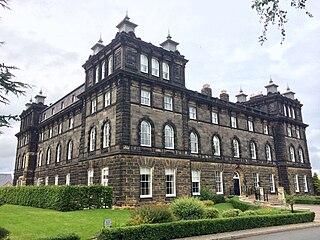
Wells House is a large former hydropathic establishment and hotel in Ilkley, West Yorkshire, England, now used as private apartments. It was built in 1854–56 to a design by the architect Cuthbert Brodrick and is a Grade II listed building. It is located above the town on Wells Road at the edge of Ilkley Moor, giving it an unobstructed view across Wharfedale from its north front. It was originally set in grounds by the landscaper Joshua Major though these gardens have mostly been built on since.
Ardsley and Robin Hood is a ward in the metropolitan borough of the City of Leeds, West Yorkshire, England. It contains 16 listed buildings that are recorded in the National Heritage List for England. Of these, three are listed at Grade II*, the middle of the three grades, and the others are at Grade II, the lowest grade. The ward contains the settlements of East Ardsley, Lofthouse, Robin Hood, Thorpe on the Hill, and West Ardsley, and the surrounding area. Most of the listed buildings are houses and cottages, farm houses and farm buildings, and the others are a church, memorials in the churchyard, and a former textile mill.
Cross Gates and Whinmoor is a ward in the metropolitan borough of the City of Leeds, West Yorkshire, England. It contains nine listed buildings that are recorded in the National Heritage List for England. Of these, one is listed at Grade II*, the middle of the three grades, and the others are at Grade II, the lowest grade. The ward is a suburb to the east of the centre of Leeds, and is mainly residential. Most of the listed buildings are on the eastern rural edge of the ward, and consist of houses and associated structures, a farmhouse, and two railway bridges.
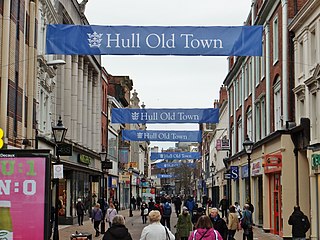
Whitefriargate is a pedestrianised street in the Old Town area of Kingston upon Hull, in the East Riding of Yorkshire, England. During the 20th century, it was one of the main shopping streets in the city centre, but some of the major stores have closed down, which has been attributed to out of town shopping centres. However, the Street still provides a useful link to and from the old town of Hull.



















